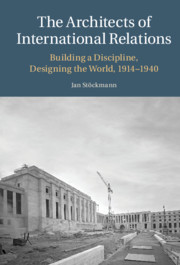Book contents
- The Architects of International Relations
- The Architects of International Relations
- Copyright page
- Dedication
- Contents
- Acknowledgements
- Archival Sources
- Abbreviations
- Introduction
- 1 Wartime Origins
- 2 Genesis of a Discipline
- 3 Peace in the Minds of Men and Women
- 4 Professors as Diplomats
- 5 Testing Collective Security
- 6 The End of World Affairs
- Conclusion
- Index
5 - Testing Collective Security
Published online by Cambridge University Press: 24 February 2022
- The Architects of International Relations
- The Architects of International Relations
- Copyright page
- Dedication
- Contents
- Acknowledgements
- Archival Sources
- Abbreviations
- Introduction
- 1 Wartime Origins
- 2 Genesis of a Discipline
- 3 Peace in the Minds of Men and Women
- 4 Professors as Diplomats
- 5 Testing Collective Security
- 6 The End of World Affairs
- Conclusion
- Index
Summary
This chapter examines ‘collective security’ during the first half of the 1930s as it informed government decision-making and shaped public debate. Rather than retrofitting it into a particular International Relations (IR) theory, it draws attention to the contingency and fluidity of ‘collective security’. First, it recounts the evolution of ‘collective security’ as a political idea and as a policy instrument from the First World War to the 1930s. The next section explains how an institutional apparatus emerged under the League of Nations and how sanctions were supposed to be employed. The third section shows how the crises in Asia, Africa, and Europe tested the concept of ‘collective security’ and questioned the logic of IR scholarship. The final section examines how the architects of IR dealt with these challenges, and it discusses whether the failure of ‘collective security’ caused a ‘great debate’ between so-called ‘idealist’ and ‘realist’ IR authors.
- Type
- Chapter
- Information
- The Architects of International RelationsBuilding a Discipline, Designing the World, 1914-1940, pp. 205 - 247Publisher: Cambridge University PressPrint publication year: 2022



